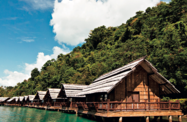With 2011 having seen a spike in visitor arrivals, the Philippines’ tourism sector is moving ahead with plans to become a major engine for the country’s economic growth.
That this increase in numbers occurred at a time of global economic downturn, not to mention some turbulence in the sector’s leadership, is no small achievement. Although tourism currently accounts for only 11% of the country’s GDP, hopes are high that this number can grow significantly.
“I hope the 12% increase in tourism arrivals [in 2011] will mark the start of better things ahead for the country,” President Benigno Aquino III recently said. “The private and public sector must work together to promote tourism.”
The 12% increase in the first nine months of 2011 – compared to the same period of 2010 – meant that more than 3m tourists visited the country. Between July 1, 2010 and June 30, 2011 there were more than 3.7m international arrivals, with South Korea being the country’s largest tourism market, followed by the US, Japan, China and Australia.
Despite the additional visitors, the Philippines’ tourism industry has lagged behind its rivals in the region. Malaysia, for example, has received 32m tourists so far this year, and Thailand has seen 14m. This demonstrates both the amount of catching up to be done as well as the Philippines’ vast tourism potential.
The surprise resignation in August of the tourism secretary, Alberto Lim, who had held the position for a little over a year, left some in the industry wondering if the Department of Tourism (DOT) would take some time to regain its footing.
Acting quickly to address the gap left by Lim’s resignation, President Aquino appointed former advertising executive Ramon Reyes Jimenez as the new tourism secretary on September 1.
Jimenez now has the task of completing and implementing the National Tourism Development Plan (NTDP) that was initiated by Lim and originally set to be unveiled in July. The plan has met with numerous delays, but heavy-hitting industry players such as the Tourism Congress and Philippine Travel Agencies Association (PTAA) have pledged to support Jimenez in developing it.
Under the NTDP, the DOT will work with government agencies and private industry players in implementing infrastructure projects aimed at increasing accessibility to more destinations and providing better services once tourists arrive.
Jimenez has said that DOT hopes to attract at least 4.2m tourists in 2012, with the longer term goal of 10m arrivals in 2016. The NTDP also includes a new branding campaign along the lines of the successful “Malaysia Truly Asia” campaign that both government and private industry players can use.
In late 2011, the Philippines unveiled the new branding campaign featuring the slogan “It’s more fun in the Philippines”. While the initiative initially received some criticism for being too plain or unmemorable, the slogan quickly went viral, spreading quickly across social media platforms and receiving praise from many in the country.
Yet many challenges still confront the industry that the country must try to resolve if the tourism industry is to continue its ascent. These include working to reverse the EU’s ban on the entry of Philippine air carriers, reducing hurdles in the procurement of visas by foreign nationals, and reviewing the taxation scheme on airlines to avoid double taxation. An insufficient tourism promotions budget, poor infrastructure and facilities, and contradictory government policies are also issues that sector insiders feel need to be more fully addressed.
To attract more international carriers to the Philippines, the Aquino administration recently implemented a “pocket open skies” policy, which eases restrictions on foreign airlines servicing airports outside of Manila’s Ninoy Aquino International Airport. Nonetheless, heavy taxation on foreign airlines has resulted in the departure of many from the country, with KLM recently announcing that it will cease all direct flights to the Philippines in 2012, eliminating the sole remaining direct connection to Europe.
A bit of good news arrived on December 3 when DOT announced that the Puerto Princesa Underground River (PPUR), which is believed to be the world’s longest underground river, had made it onto the New Seven Wonders of Nature list, thereby enhancing the Philippines’ image on the international tourism stage.
“With the PPUR’s success, Palawan and Puerto Princesa are now part of what will be the national tourism development plan,” Jimenez said at a news conference. “PPUR will lead the way for the golden era of tourism in the country. Tourists are coming and we all have to prepare.”
The World Travel & Tourism Council estimates that tourism’s contribution to GDP will rise by 6% per year, from 11.4% of GDP in 2011 to 12.6% by 2021, or P1.09trn ($24.9bn) to P1.96trn ($44.7bn). The country will be waiting to welcome these new arrivals, with all eyes on how much they may contribute to the country’s GDP.

